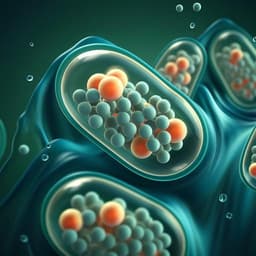
Medicine and Health
Preparation of glass-ionomer cement containing ethanolic Brazilian pepper extract (*Schinus terebinthifolius* Raddi) fruits: chemical and biological assays
I. C. Pinto, J. B. Seibert, et al.
This innovative study presents a groundbreaking composite drug delivery system, combining glass-ionomer and Brazilian pepper extract, designed to combat oral pathogenic microorganisms while ensuring *in vitro* biocompatibility. Conducted by a team of researchers including Isabelle C. Pinto and Janaína B. Seibert, this research suggests a promising new alternative for endodontic treatment.
Playback language: English
Related Publications
Explore these studies to deepen your understanding of the subject.







